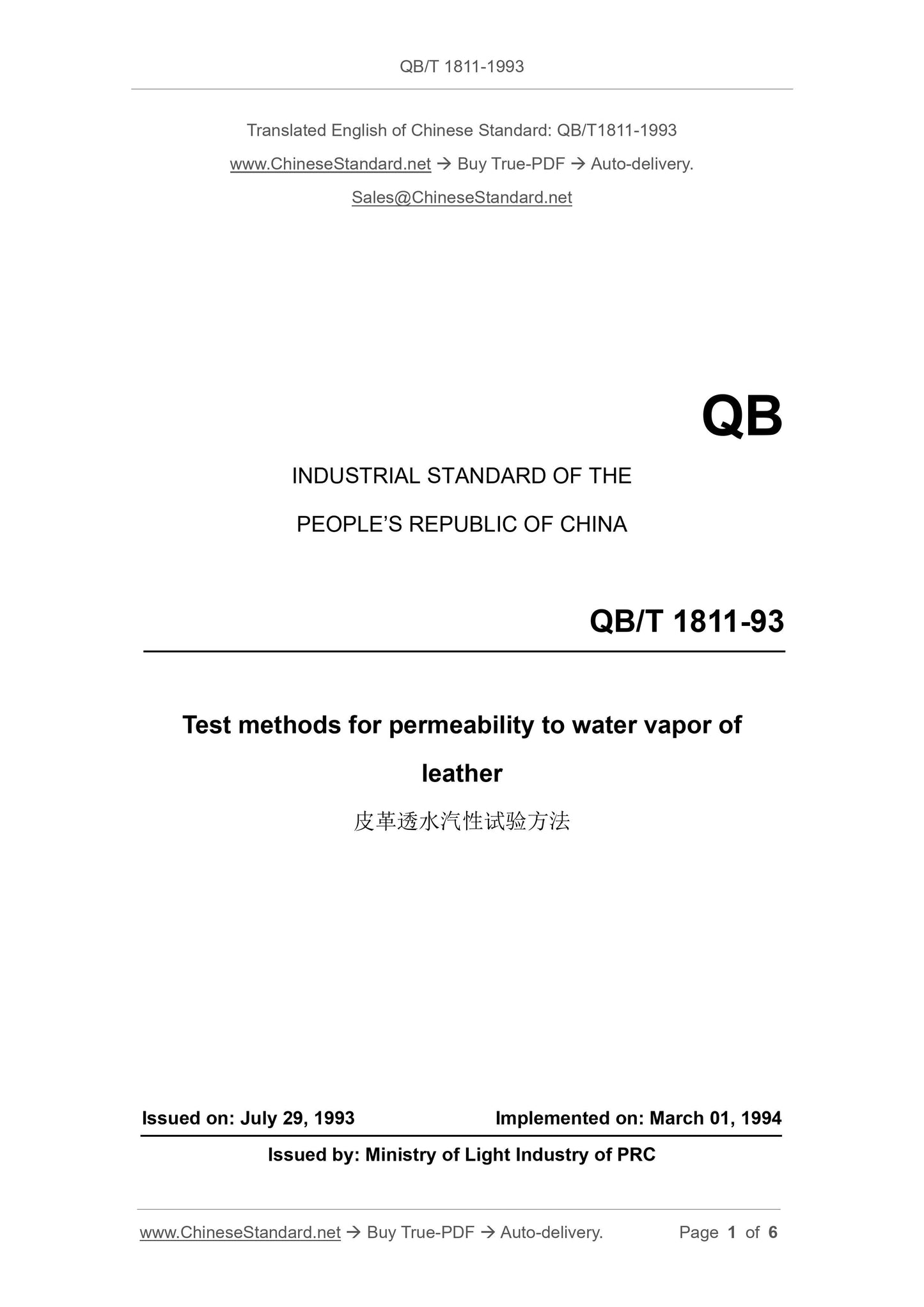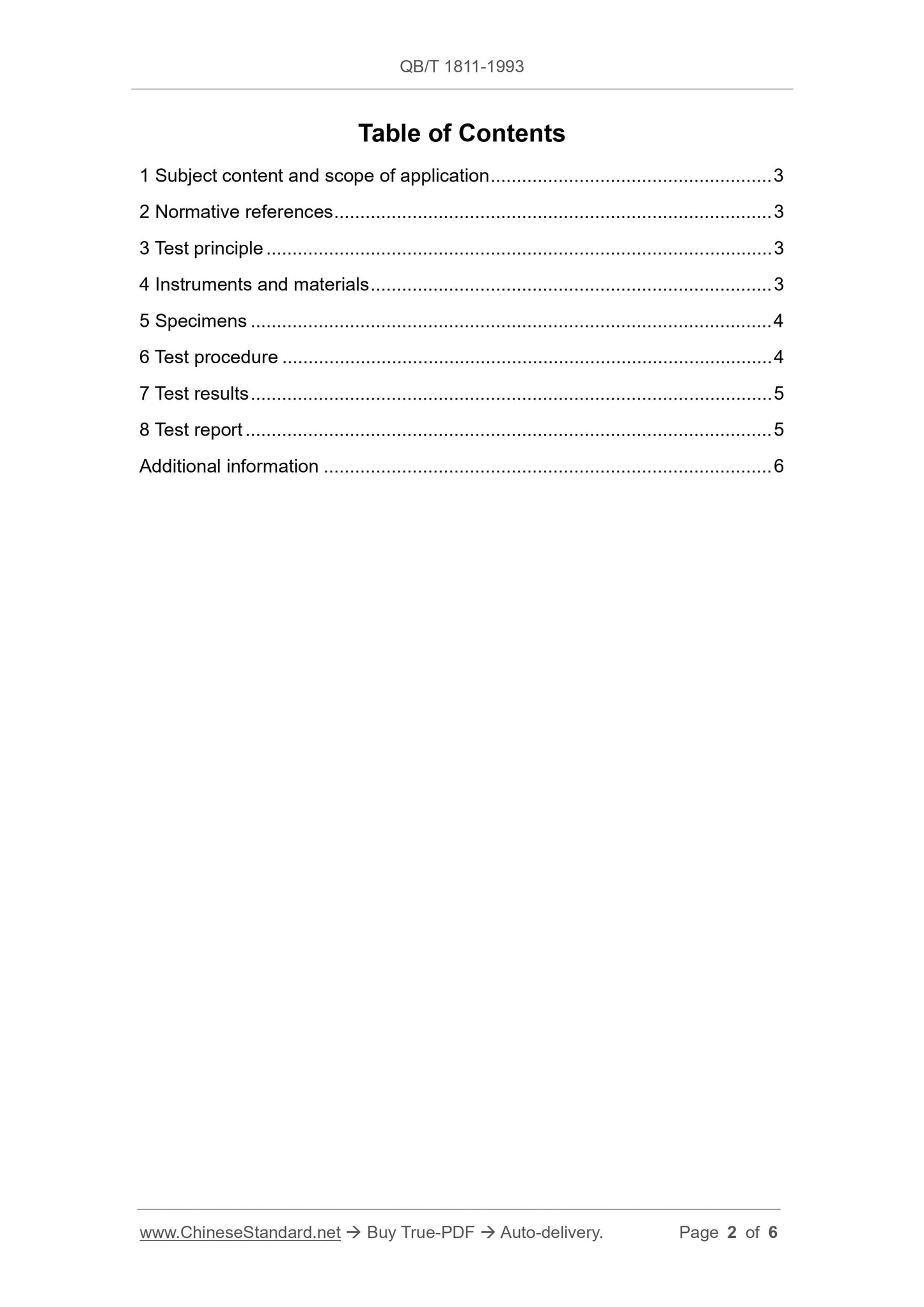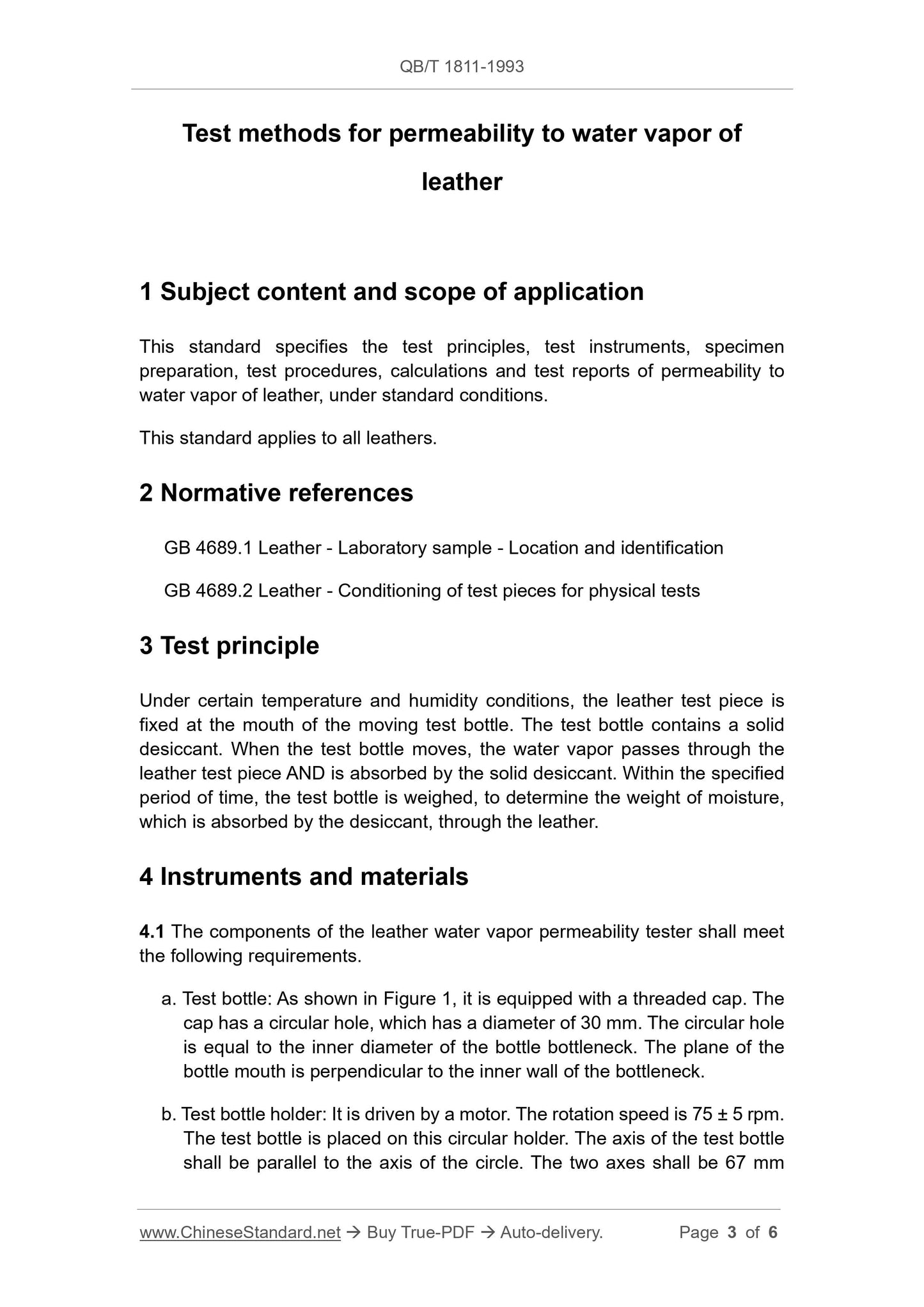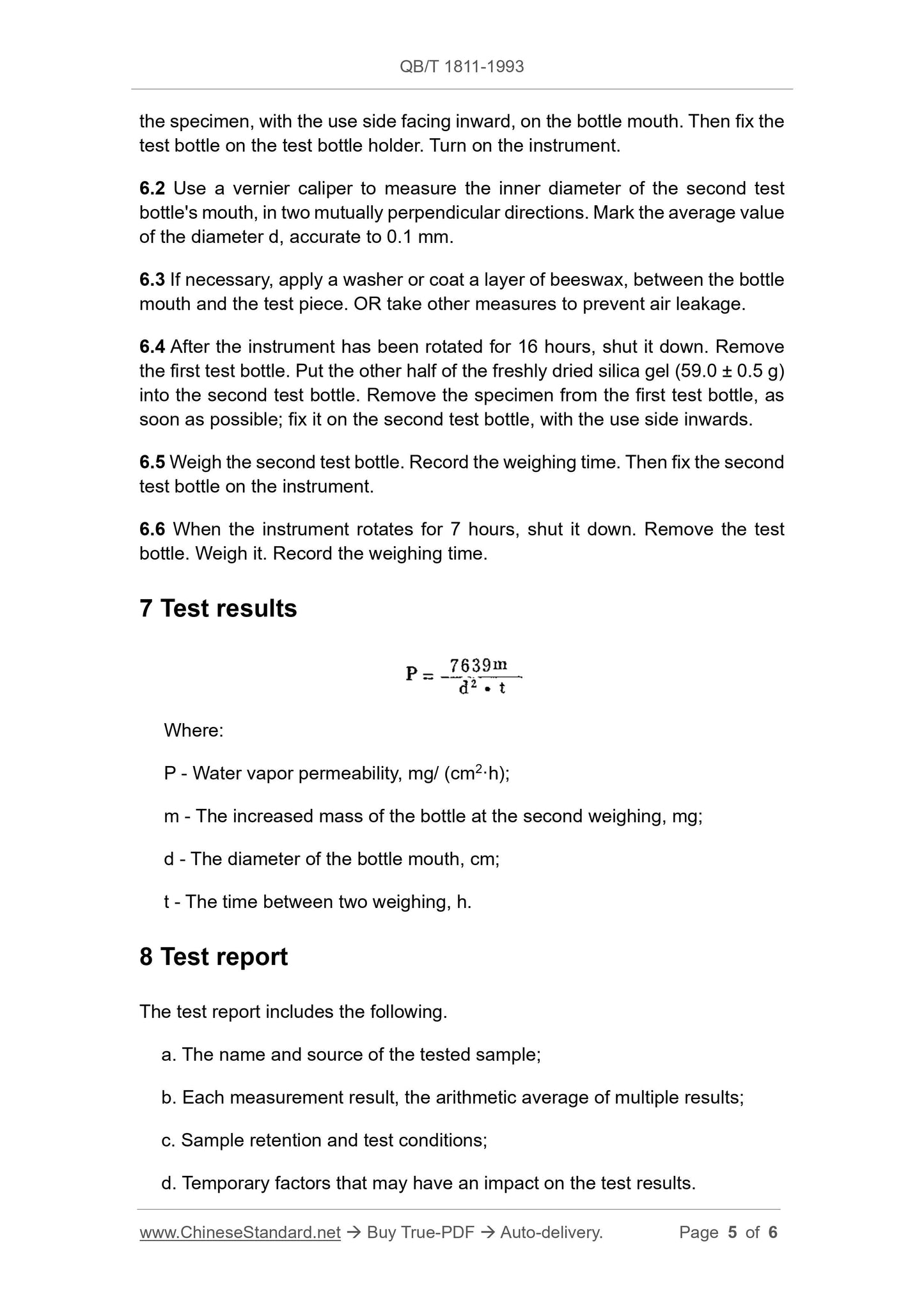1
/
of
4
www.ChineseStandard.us -- Field Test Asia Pte. Ltd.
QB/T 1811-1993 English PDF (QB/T1811-1993)
QB/T 1811-1993 English PDF (QB/T1811-1993)
Regular price
$80.00
Regular price
Sale price
$80.00
Unit price
/
per
Shipping calculated at checkout.
Couldn't load pickup availability
QB/T 1811-1993: Test Methods for Permeability to Water Vapor of Leather
Delivery: 9 seconds. Download (and Email) true-PDF + Invoice.Get Quotation: Click QB/T 1811-1993 (Self-service in 1-minute)
Newer / historical versions: QB/T 1811-1993
Preview True-PDF
Scope
This standard specifies the test principles, test instruments, specimenpreparation, test procedures, calculations and test reports of permeability to
water vapor of leather, under standard conditions.
This standard applies to all leathers.
Basic Data
| Standard ID | QB/T 1811-1993 (QB/T1811-1993) |
| Description (Translated English) | Test Methods for Permeability to Water Vapor of Leather |
| Sector / Industry | Light Industry Standard (Recommended) |
| Classification of Chinese Standard | Y45 |
| Word Count Estimation | 3,364 |
| Date of Issue | 7/29/1993 |
| Date of Implementation | 3/1/1994 |
| Quoted Standard | GB 4689.1; GB 4689.2 |
| Regulation (derived from) | Industry-Science (2010) No.77 |
| Summary | This standard specifies the principles leather water vapor permeability test, test equipment, sample preparation, test procedure under standard conditions, calculation and test reports. This standard applies to all leather. |
Share







